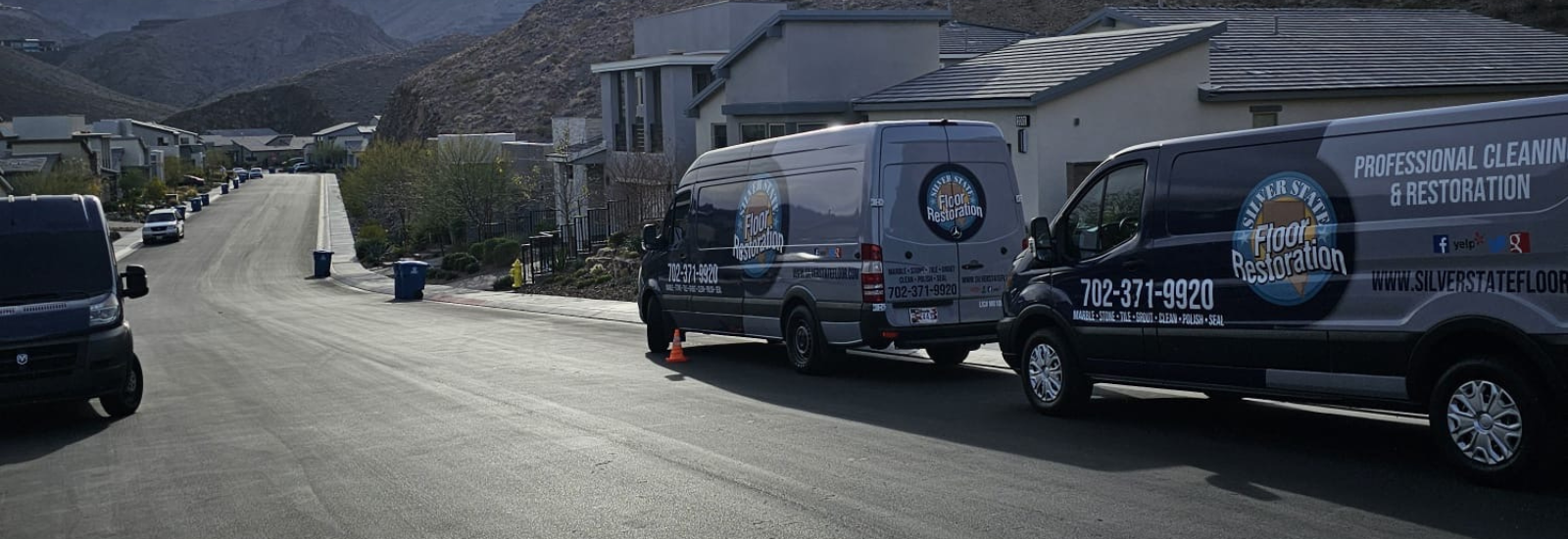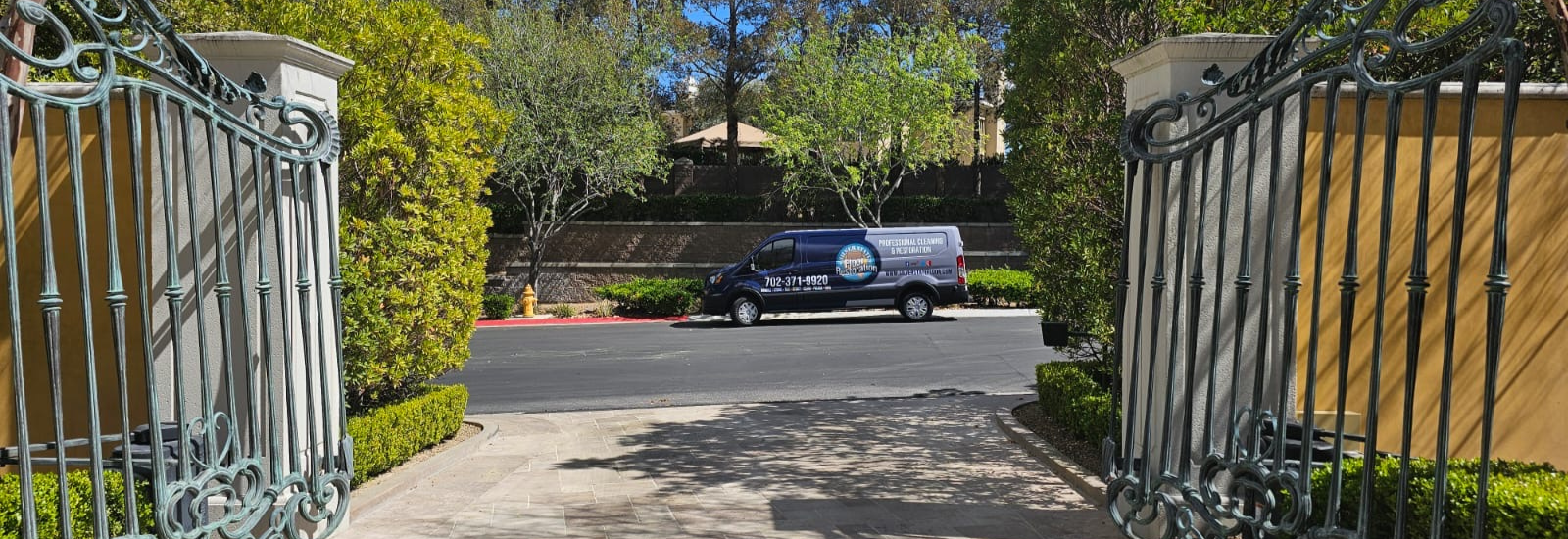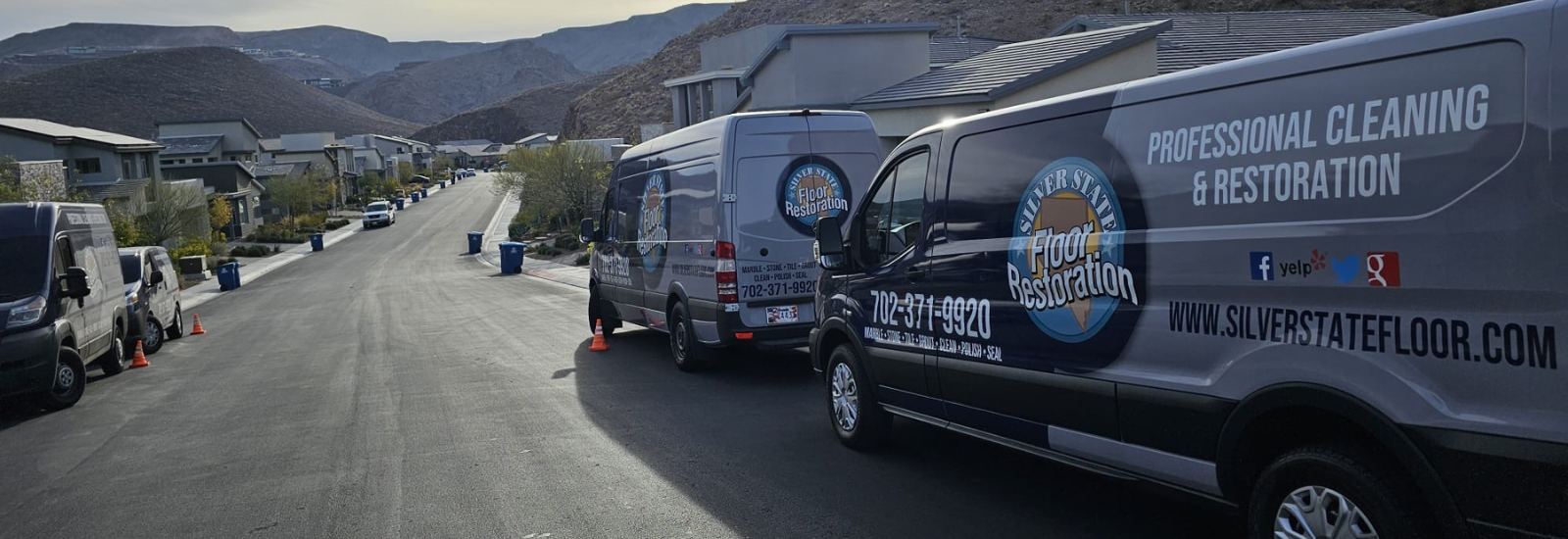Not too many folks take a look at the flooring in their home or business and wonder how it all started. A very interesting chain of events got the ball rolling.
Silver State Flooring Restoration would like to relate the evolution of stone materials used in flooring.
Dirt Floors? In the beginning of flooring materials used in interior construction, it consisted of the ground itself! The ground was often cleared and leveled off before the structure was built up around it. In some of the more primitive days, hay or straw was used to soften the floor’s surface, and to keep it insulated for warmth in the cold winter months. Cured animal skins were also draped over the earth to provide some level of padding and insulation. Some ancient families would drop trash and refuse directly on the floor, and then walk over it to compress it down into a solid surface coating.
Hard as Concrete Animal Waste Flooring? In agricultural and rural areas, homes were often shared with livestock. When the animals would wander into the lived in areas, they would sometimes leave waste, which would then also be walked over and compressed down into the floor. The result was a surface that was as hard as concrete. There were number of different ways they would utilize the animal waste in methods to ensure that the floor would set better, or in a more pleasant way. One method included using animal blood, most often taken from a slaughtered pig, to sprinkle over these tramped refuse surfaces in order to harden them faster. Mint was also used in many European floor surface mixes as a deodorizing agent, to help neutralize the smell of urine and feces.
Early North American Flooring. Early society in North America would often pour large amounts of sand down across the ground of their structures and then they would level and smooth it out. Over time this sand would collect waste and refuse, and would turn mucky, much like a giant litter box. Once the flooring became hardened, it could be swept clean and then replaced with a fresh coat of sand, constructing a warm, comfortable, better sanitized ancient floor covering.
Sunflower & Peanut Shell Floors? Another method commonly used in this area was to spread peanut and sunflower seed shells across the floor. As they were walked upon the oil would coat the peoples feet and then smooth out across the dirt floor, hardening its surface while making it more compact, stable, and free of dust.
The History of Natural Stone Flooring Options
Stone Flooring in Ancient Egypt – Over 5000 years ago, ancient Egypt was the first to use stone surfaces in their construction of building and monuments, using large bricks of mountain cut material. The pyramids at Giza have some of the oldest, still existing, natural stone flooring in the world; proving the long term resilience of these surface coverings.
Ancient Greek Floor Mosaics – The method of using stone in flooring continued to grow. Experts have evidence that the Greeks were producing pebble mosaic floors as early as 3000 years ago. They did so by placing hundreds of small, rounded stones into a mortar bed in order to form an image. After some time, they traded pebbles for flat pieces of colorful stone tile. There are other instances of natural stone materials being used across the ancient world. The Greeks lusted for marble as a flooring material for its translucent abilities which made the lighter versions of marble stone seem to glow and shine in the sunlight.
Turkish Marble Floor Tiles – The royal families of the Carthaginian Empire also treasured their special Turkish marble that they built all of their palaces as a sign of prestige and elegance.













